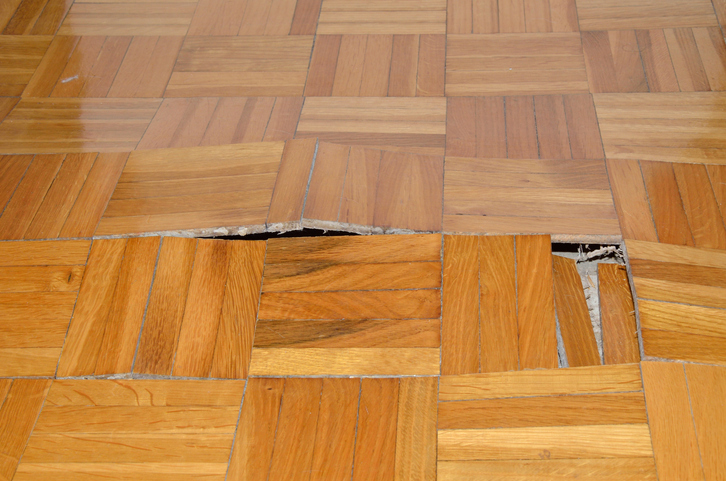Laminate Flooring
This type of flooring is known to be very resilient to wear and tear, but it does not hold up well to water. Laminate is made of a thin layer of wood on the top layer, and the rest is usually made from particle board or press board, which can absorb water very quickly. When laminate flooring absorbs water, it does so very quickly and takes very little time to delaminate.
 structure and subfloor to dry thoroughly.
structure and subfloor to dry thoroughly.Vinyl
Linoleum
Similar to vinyl, linoleum is resilient to water damage and will need to be removed if water gets underneath to ensure the subfloor dries out.
Ceramic Tile
Ceramic tile handles water damage better than the other types of flooring mentioned. Although it is semi-porous like wood, it is more likely to release water than wood is. In most cases, ceramic tile will dry, allowing the wood or concrete underneath to dry as well. Although it is resilient, if the grout or tiles have loosened or the wood subflooring is not drying, the tiles will need to be removed for proper drying.
Wood Flooring
This type of flooring is semi-porous and absorbs water through the joints of the wood. If you catch the water damage on wood flooring in a short amount of time it can usually be recovered. There are tools such as drying mats and heaters that can be used to remove the water from the wood to restore it to its original state. On the other hand, if the water has sat on the flooring for an extended period, it will absorb into the flooring causing it to stain and cup.
If the water is not cleaned off of wood flooring quickly, and the wood brought back to it’s pre-loss state, the staining and cupping will get worse, leaving the wood flooring damaged and possibly beyond repair.
Professional Water Damage Restoration
Before you try to dry out your flooring yourself, contact ServiceMaster of Greater Pittsburgh to ensure you get the best results. By using a water damage restoration professional, we can locate the source of the water, extract the water and remove unsalvageable building materials and contents. ServiceMaster will use meters to measure the amount of moisture in the materials ad atmosphere and use the correct equipment to dry the materials back to a pre-loss state.
